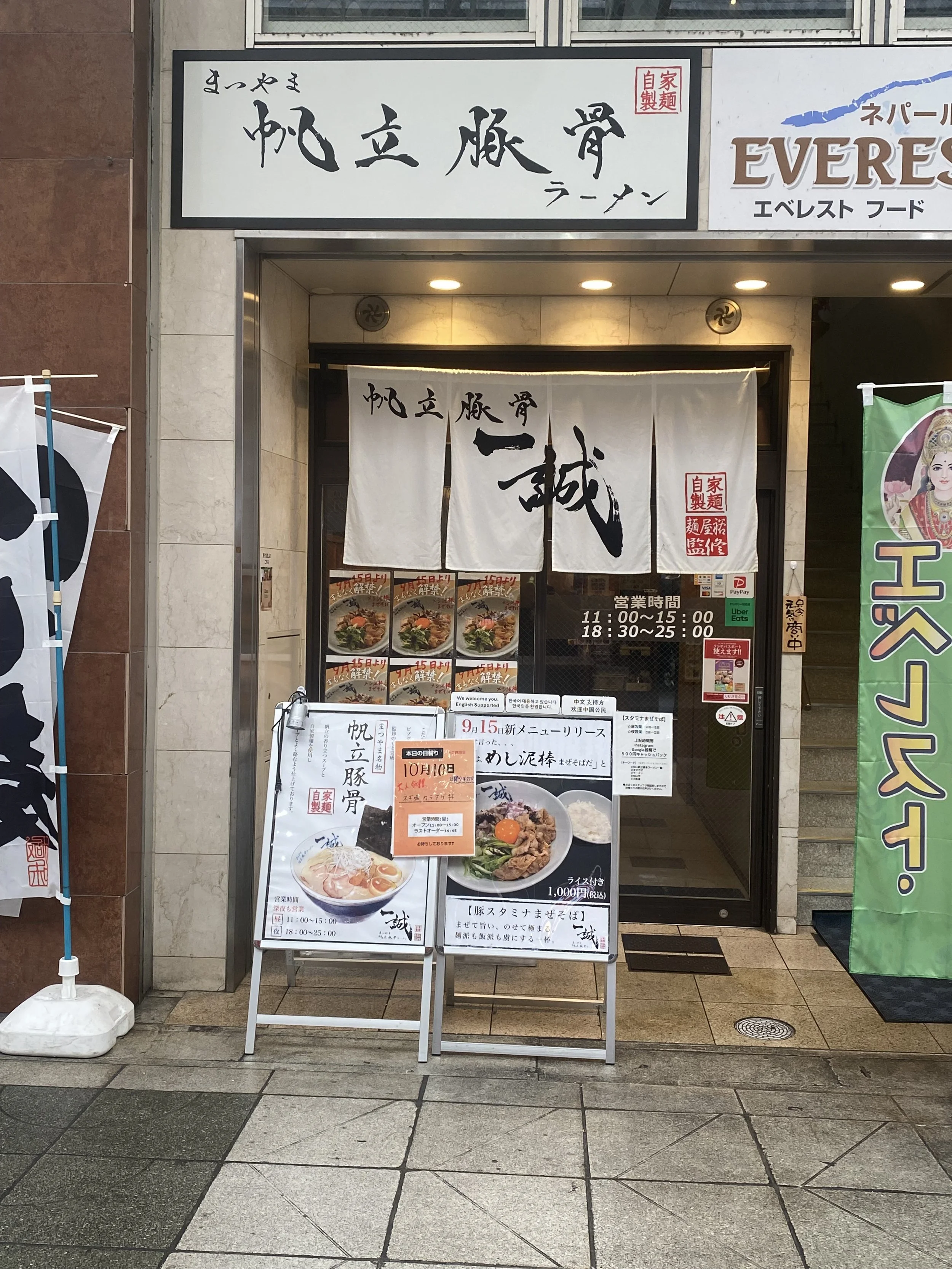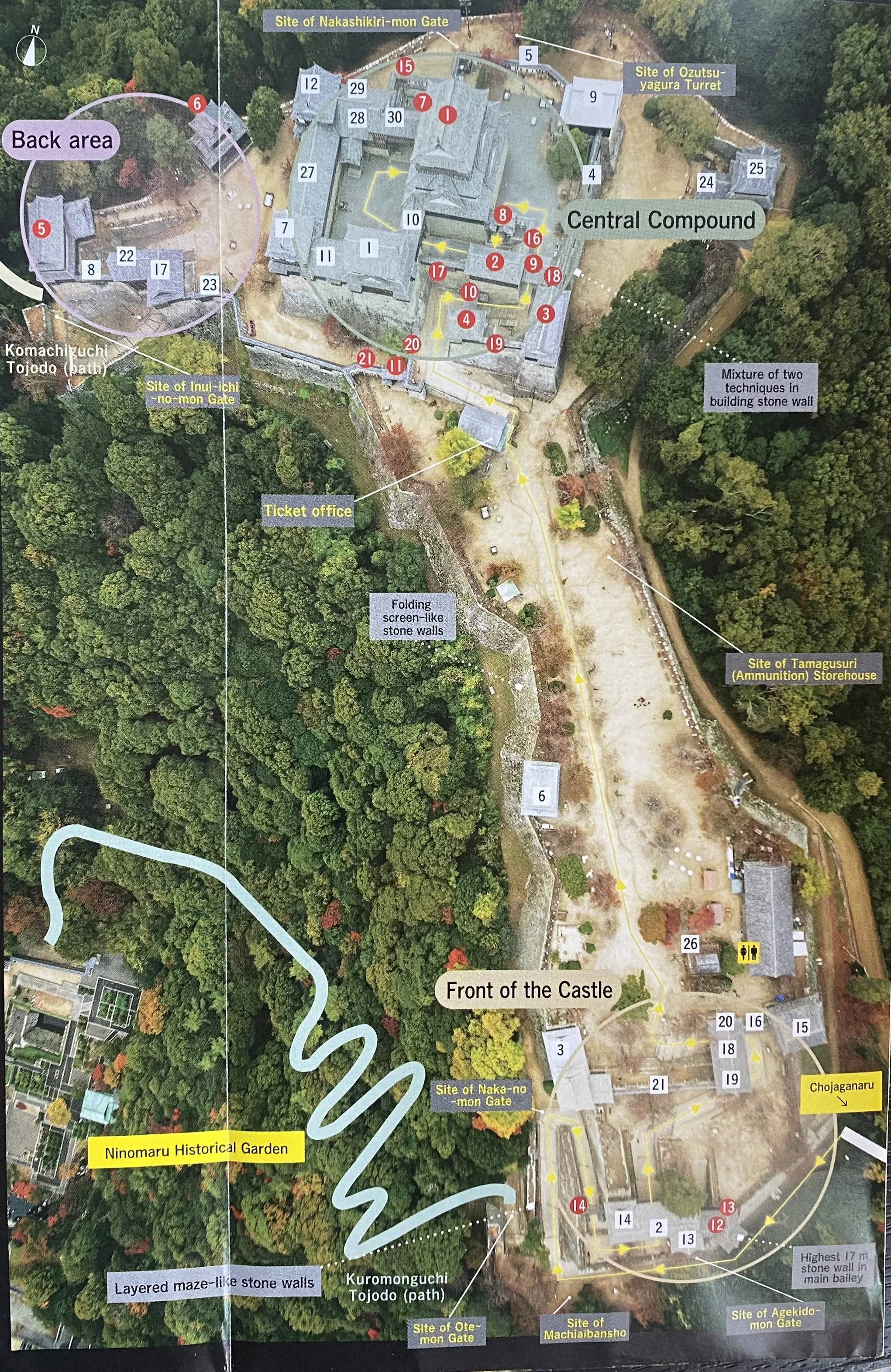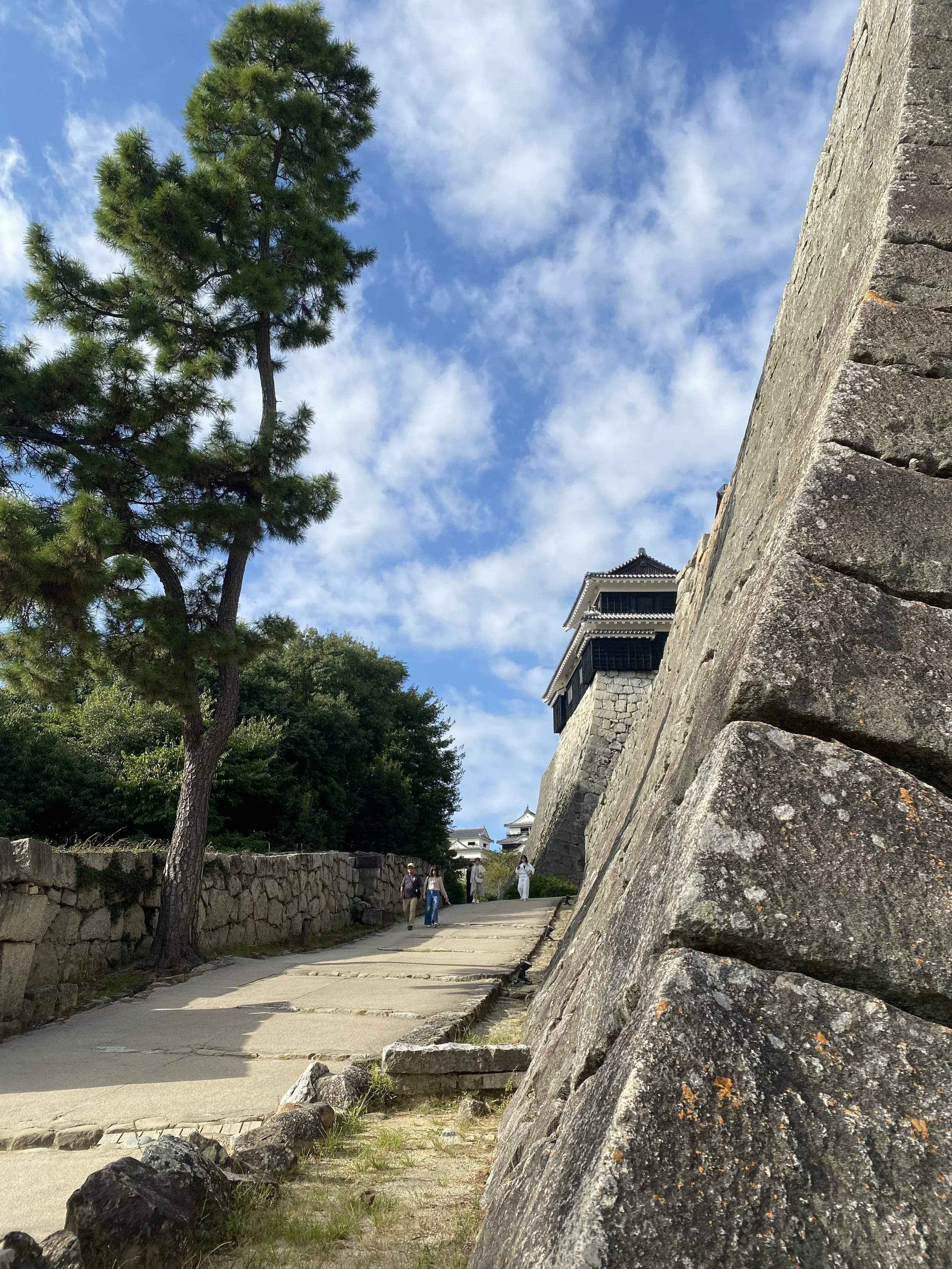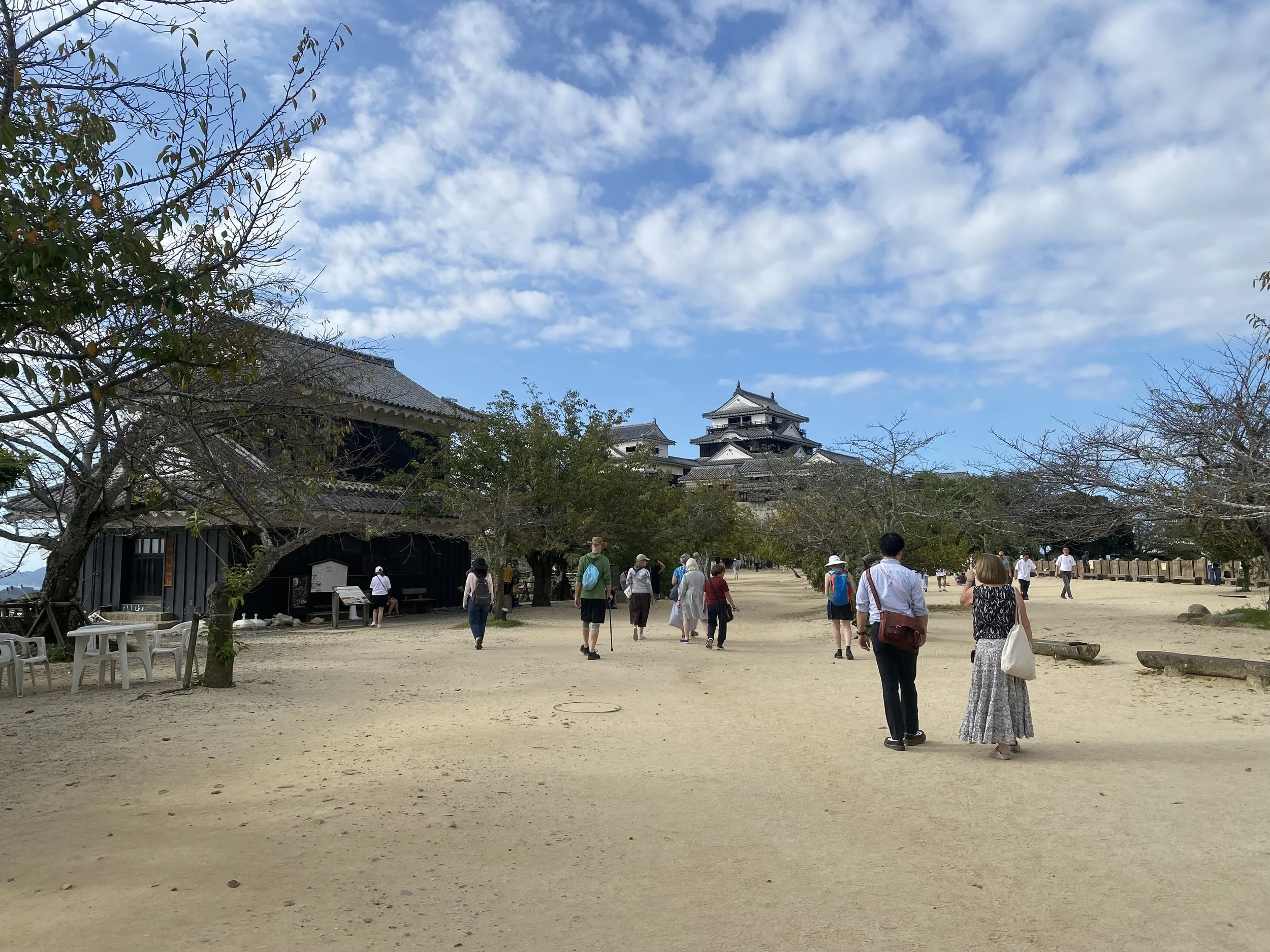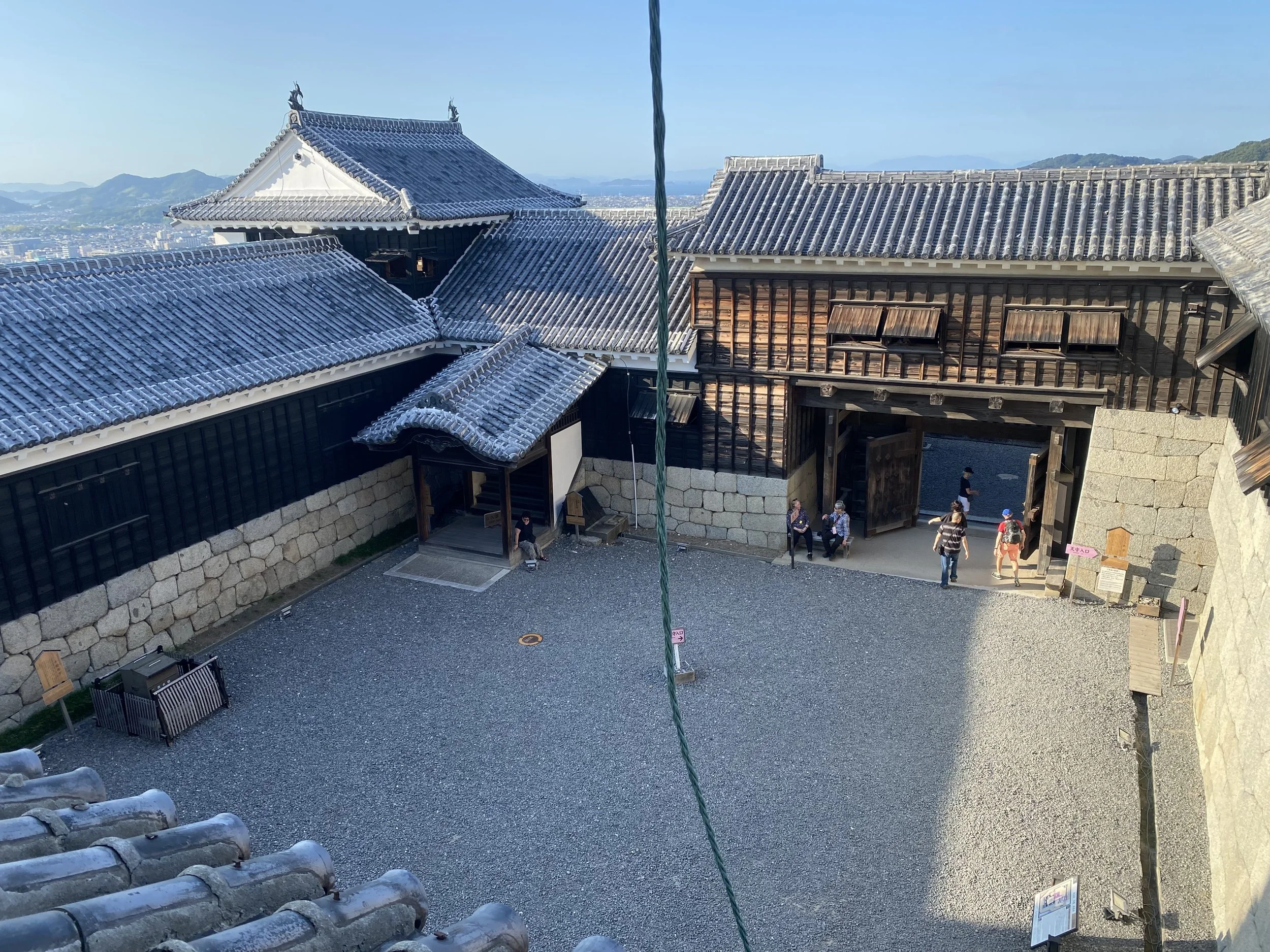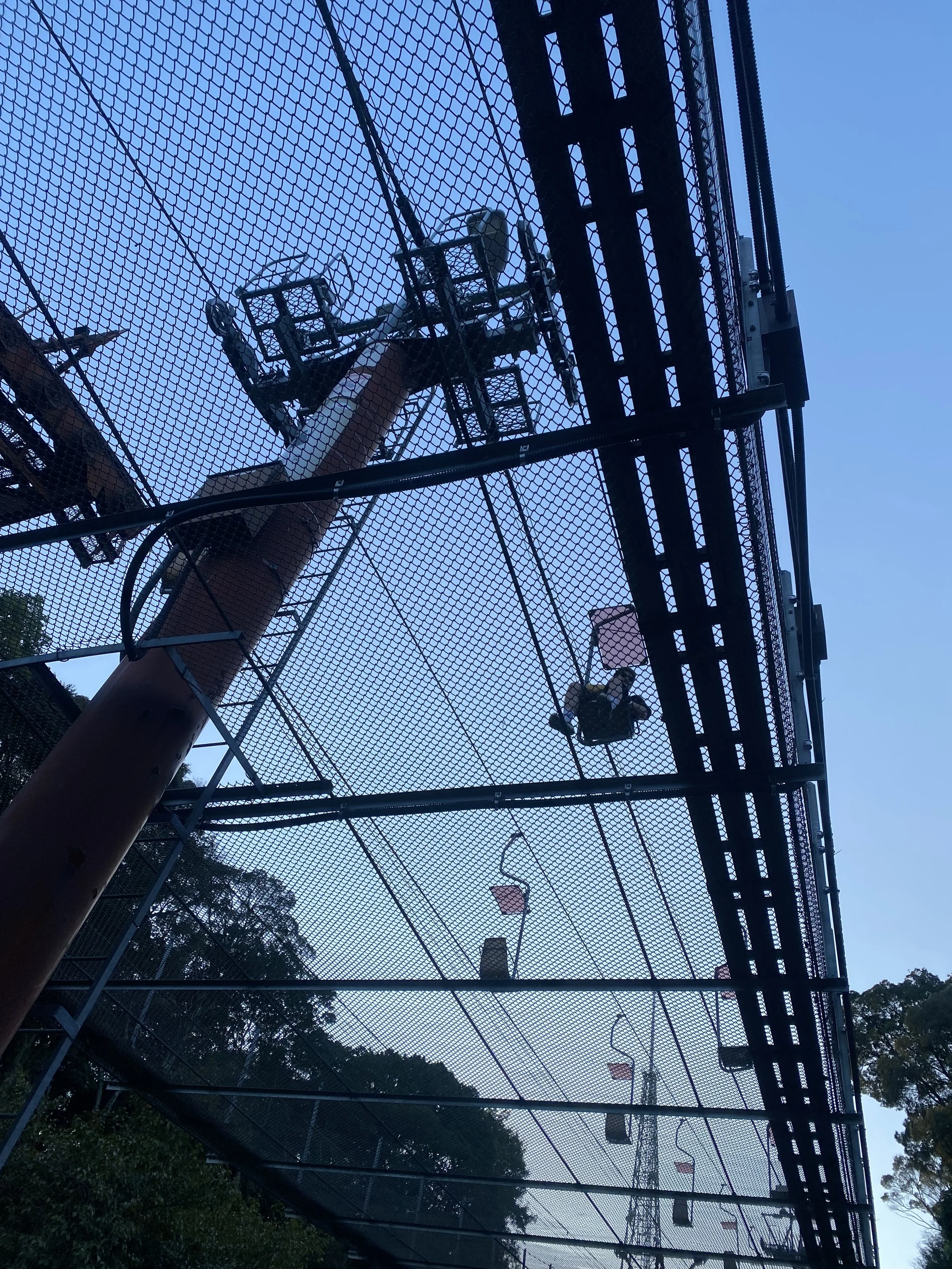Matsuyama 松山
9th October
The only reason why you would want of stop off at Matsuyama is to see the 17th century castle, one of the twelve remaining across Japan from the Edo period. Luckily for us It’s a good reason because the castle is pretty damn impressive!
First though our last journey on the island of Shikoku, this time on a local train.
There’s always somewhere to stock up as you travel around and, apart from the larger cities, the transport hubs are so calm and always so clean.
Speaking of cleaning, ablutions in Japan is a hands free operation. You get used to the controls pretty quickly with self explanatory diagrams for each of the buttons. This toilet on the train was unusual in that the instructions are in English. Note the music modesty button. That is so Japanese.
We arrive at lunchtime a fit in a quick raw egg on stuff in a bowl and dippy udons before heading to the castle.
There were three ways to get up to the outer Bailey of the castle; cable car, chair lift or walking. Pauline chose chair lift and I joined the ‘we always take the most strenuous route’ crew and walked. Patrick likes to under promise and over deliver so his 30 minute estimate for the walk was actually only 10.
The start of the outer castle walls are immediately impressive for their fastness and undoubted defensive qualities. Curved outward at the base the huge interwoven pieces of stone nestle into each other without mortar and appear to have only become more routed with the passing centuries of earthquakes since their first construction in 1603.
The castle here was built by Kato Yoshiaki following the gifting of the site to him for his victories in the reunification war leading up to the shogunate period of Japan’s history that was to last for nearly 300 years.
It was never attacked during this period but, like most other timber buildings in this country it seems, was prone to bits burning down periodically. Maybe it wasn’t attacked because it was so well built or maybe because the Edo period, when Japan was virtually closed off from the rest of the world, was one of peace for the country.
The route to the core of the castle is ever upward. You’d definitely be out of puff by now if you were fully laden down with Samurai armour.
Even when you finally reach the compound just past the wall of the second Bailey, the Tenshu (the main building and last line of defence) still seems a long way off.
The stone wall at the base of the Tenshu is 18 metres tall and there is only one entrance into the Lord’s chamber that lie within.
Nice doors
The building rises up through ever diminishing floor plates until we reach the top storey at fourth floor. A small but commanding room that would be a great last point for defence as long as you weren’t trying to escape a fire.
It also afforded some pretty spectacular views across the city. Probably looked a lot different and a lot more green in the 17th + Century.
Back down to town on the chair lift for some whilst others of us walked.
DIY cooking in the evening with a yakiniku dinner which involves putting bits of wagyu beef onto a hot grill. The beef was graded from basic to top drawer (top right in photo with the marbling). Price range was from around 1300 yen to 2800 yen. It was all really good but the top end shone and was worth every extra penny. Good job we didn’t have to pay for a chef as well though!
Another great day of the tour ends and we are very pleased that these are heavily outweighing the not so great days.
Back to the main island of Honshu tomorrow and Hiroshima.



